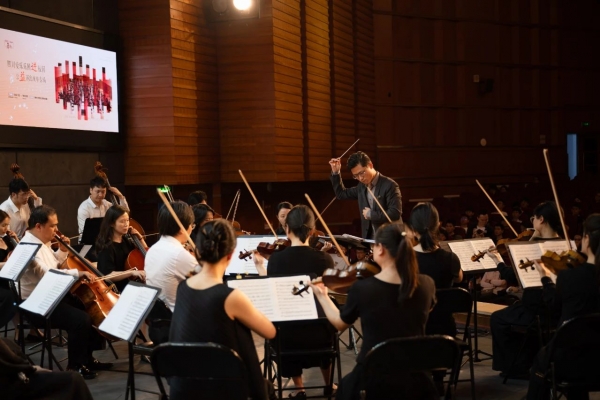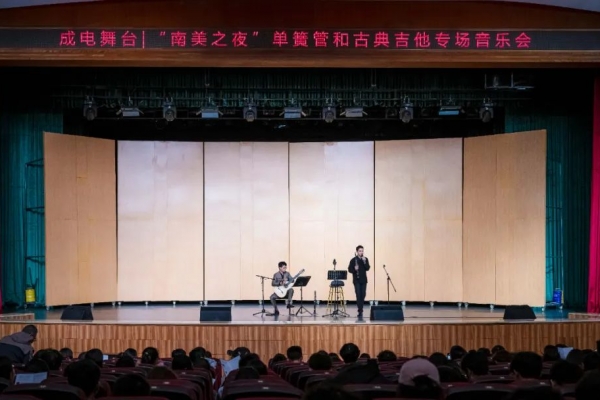即可将网页分享至朋友圈
为搭建我校博士后之间的学术交流平台,促进学术水平提升,学校博士后管理办公室组织开展博士后学术沙龙活动。本次沙龙由我校博士后安洪阳、孙国敏、陈桂廷分享其研究成果,诚挚邀请感兴趣的师生参加。
一、时 间:2021年10月22日(周五)14:15
二、地 点:清水河校区经管楼宾诺咖啡
三、主办单位:电子科技大学博士后管理办公室
四、承办单位:信息与通信工程学院
五、活动安排:
报告一:
(1)主 题:基于压缩采样恢复的高轨照射源双基SAR成像方法
(2)主讲人:安洪阳 信息与通信工程学院博士后
(3)交流内容:
高轨照射源双基合成孔径雷达(SAR)采用GEO SAR卫星作为照射源、机载或低轨(LEO)等平台作为接收站。其接收平台可以省去发射系统,可大幅减小接收平台的系统功耗、成本,可适装于小型无人机、小卫星等平台,在遥感测绘、侦察监视等领域具有广阔的应用前景。但是GEO双基SAR收发双平台大尺度异构、非等速运动、回波欠采样,导致传统传播时延模型失效、成像模糊。
在本次报告中,首先根据双基运动特性建立“非停走停”时延模型,为高精度成像奠定理论基础;接着,采用快速频域成像算法的逆过程高效构建了回波空变条件下的GEO双基SAR解耦观测模型。针对欠采样条件下的GEO-LEO双基SAR稀疏场景成像,通过在复近似消息传递算法迭代求解过程中同时利用多接收通道信息,实现了无模糊成像;针对欠采样条件下的GEO星机双基SAR复杂场景成像,将其建模为联合稀疏与低秩优化问题,采用改进的交替方向乘子法对场景中的稀疏和低秩部分进行更新,实现了无模糊成像。
(4)主讲人简介:
安洪阳,2020年毕业于电子科技大学信号与信息处理专业,新加坡南洋理工大学联合培养博士。现为电子科技大学信息与通信工程学院博士后,研究方向为合成孔径雷达成像及优化方法在成像中的应用,已在IEEE Trans. on GRS等本领域Top期刊和国际会议上发表学术论文20余篇。承担或主研自然科学基金、博士后科学基金、预研重点等科研项目。
报告二:
(1)主 题:RF Transmitters Identification using Deep Learning based Approach
(2)主讲人:孙国敏 信息与通信工程学院博士后
(3)交流内容:
In this talk, we briefly discuss the RF transmitters identification problem using deep learning approach. RF transmitters identification are facing big challenge since the increasing use of wireless devices in recent years. Traditional approaches which choose specific rapid fingerprintings manually for identification need to be improved due to the potentially large number of transmitters sharing the same channel in the same location. Another way for RF transmitter identification is the deep learning based approach. Deep learning techniques are widely used in various fields recently since they have achieved excellent performance in computer vision and speech recognition, which learns the hidden features of data by the convolutional neural network (CNN) and generates extractors for discriminative features granularity during training. With the powerful learning ability, DL techniques have also demonstrated that can be used for feature learning to fingerprint wireless devices with high accuracy.
We will introduce three deep learning based methods for RF transmitter identification, including: (1) the prototypical network based method for RF transmitter identification, (2) the siamese network based method for RF transmitter identification, (3) RF transmitters identification using ensemble learning method.
Firstly, we introduce how to identify the RF transmitter using prototypical network. The prototypical network is proposed for few shot learning, the network structure is composed by two parts: the feature maps and prototypes learning. Similar to the general convolutional neutral network, the feature maps of prototypical network is implemented by the convolution architecture, which aims at learning the fingerprintings of transmitters. The prototype learning for each transmitter is given by averaging all the output of the feature maps step. The identification for testing samples are implemented by measuring the distance between each prototype and the output of feature maps step of the testing sample.
Secondly, we investigate how to use the siamese network for RF transmitter identification. Compared with the general convolutional neural network, the structure of siamese network is totally different. The input of siamese network is a pair of samples, i.e., two signals are fed into the network. The output is 0 or 1. If the input pair are from the same transmitter, the output is 1, otherwise 0. The network is used to learn the difference between different transmitters, the similarity of the same transmitter, which is also implemented by the convolutional architecture. Due to its special input, the siamese network can be used for data augmentation. All the data from different transmitters are pair-wise combined, which increases the number of training samples. This is important in real scenes.
Finally, we explore the RF transmitters identification using ensemble learning method. In order to distinguish threats from unknown or rogue transmitters, we try the convolutional neural network based ensemble leaning method for RF transmitters identification by considering both the usage of the transmission data and the intrinsic physical characteristics of transmitters’ signals. The method includes five kinds of classifiers trained by five different RF sample datasets. Five training datasets are given by the RF I/Q signals, the RF I-part signals, the RF Q-part signals, the short time Fourier transform of RF I/Q signals and the wavelet transform of RF I/Q signals. While making full use of training data, the proposed method introduces the classic rapid fingerprintings of RF transmitters for identification. The training for each type of signal is given by two weak classifiers, the strategy that averaging the result of two week classifiers is utilized for each signal. The final identification can be evaluated by voting the training result of all types signals.
(4)主讲人简介:
G. Sun received the Bachelor degree from Shanxi Normal University and Ph.D. degree from the University of Electronic Science and Technology of China (UESTC), in 2013 and 2020 respectively. She currently works as a Postdoctoral Fellow in the School of Information and Communication Engineering of UESTC. Dr. Sun is working in the field of RF transmitter identification and image processing using deep learning. Her main research interests include wavelet transform; deep learning; image deraining and RF transmitter identification.
报告三:
(1)主 题:High-order finite difference methods for seismic wave modelling and reverse time imaging
(2)主讲人:Guiting Chen, School of Information and Communication Engineering
(3)交流内容:
Finite-difference (FD) methods are the most popular tool for understanding the complex wave phenomena due to their straightforward implementation and relatively small consumption. FD methods have evolved into an essential step of the advanced seismic imaging and velocity modelling techniques. Conventional explicit FD schemes have only temporal second-order accuracy, and they are prone to temporal dispersion error with a large time step. To improve the temporal approximation accuracy, we developed a series of spatial and temporal high-order FD methods by the Lax-Wendroff approach. Dispersion and stability analyses proved that the new methods have wider effective bandwidth for high-wavenumber components of seismic wavefield and better stability than the conventional methods. Besides, we provided a framework for automatically choosing the optimal parameters of FD scheme in the acoustic wave modelling. The proposed framework can strictly guarantee stability while having enough accuracy for arbitrary inhomogeneous velocity model. We applied the proposed series of technologies to the reverse time migration, and had made progress in complex structure imaging and computational efficiency.
(4)主讲人简介:
Guiting Chen is a post-doc majored in seismic signal processing. He obtained bachelor’s degree of Geophysics in the Chengdu University of Technology (2011-2015), then performed PhD research in Geodetection and Information Technology in the Institute of Geology and Geophysics, Chinese Academy of Sciences (2015-2020). He entered the Laboratory of Imaging Detection and Intelligent Perception of UESTC for post-doctoral research in 2020. His research interests include seismic signal processing, advanced seismic modelling and imaging technology, numerical solution of inverse problem.
电子科技大学博士后管理办公室
2021年10月20日
编辑:林坤 / 审核:林坤 / 发布:陈伟


